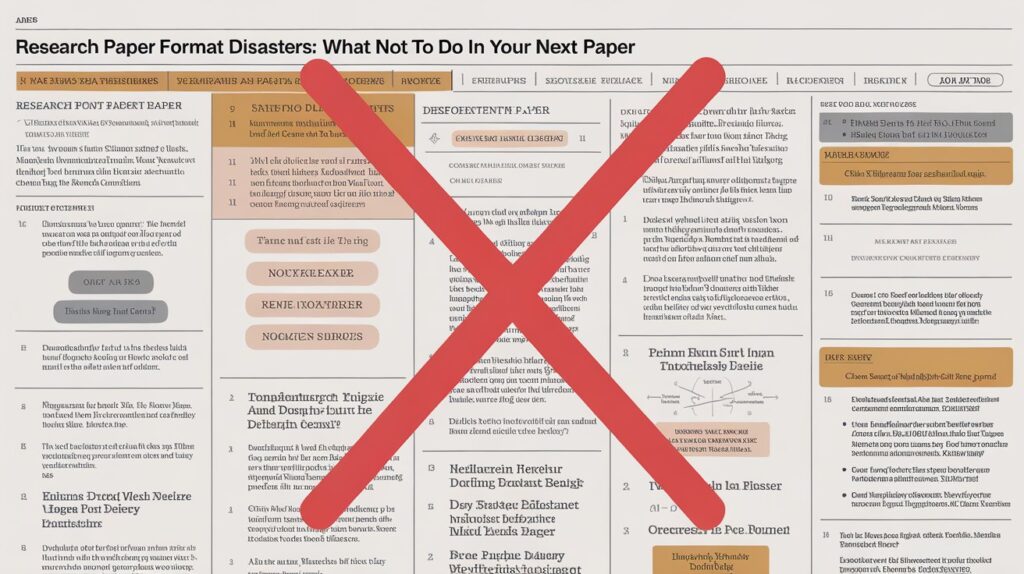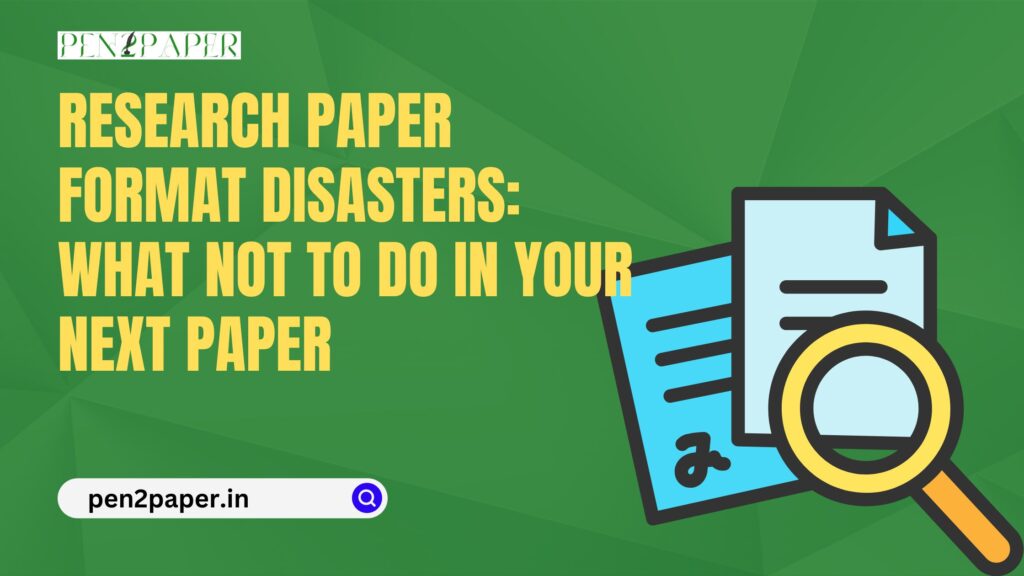Writing a research paper is a crucial part of academic success, but improper formatting can severely impact your grades. Many students unknowingly make critical mistakes in their research paper format, leading to deductions and poor readability. In this guide, we’ll explore the most common formatting disasters and how to avoid them.

1. Ignoring the Required Citation Style
One of the biggest research paper format disasters is failing to use the correct citation style. Whether your institution requires APA, MLA, Chicago, or Harvard, using the wrong format can result in plagiarism concerns and lost marks. Always refer to your instructor’s guidelines and utilize citation tools to ensure accuracy.
How to Avoid This Mistake:
- Review the official style guide for your required format.
- Use citation management software like Zotero or EndNote.
- Double-check in-text citations and the reference list before submission.
2. Improper Page Layout and Margins
Many students overlook the importance of page layout, which includes margins, spacing, and font selection. Academic institutions typically require 1-inch margins, double spacing, and a readable font like Times New Roman (12 pt). Deviating from these standards can make your paper look unprofessional.
How to Avoid This Mistake:
- Set your document’s margins to 1 inch on all sides.
- Use a standard academic font and avoid decorative styles.
- Ensure your paper is double-spaced for better readability.
3. Skipping the Title Page and Headers
A properly formatted research paper requires a title page and headers that align with the chosen citation style. Some students either forget to include these elements or format them incorrectly, making the paper appear incomplete.
How to Avoid This Mistake:
- Follow the guidelines for title pages specific to APA, MLA, or other styles.
- Add running headers or footers as required.
- Include your name, date, and course information in the correct format.
4. Poorly Structured Abstract and Introduction
The abstract and introduction are essential for setting the tone of your research paper. A weak or missing abstract confuses readers, while an unstructured introduction can fail to engage your audience.
How to Avoid This Mistake:
- Summarize your research concisely in the abstract (typically 150–250 words).
- Clearly state your research objective in the introduction.
- Use engaging language to capture the reader’s attention.
5. Disorganized Headings and Subheadings
A research paper without a clear structure is difficult to follow. Some students use inconsistent headings, while others fail to include them at all, making the content harder to navigate.
How to Avoid This Mistake:
- Use consistent heading levels (e.g., H1 for the title, H2 for major sections, H3 for sub-sections).
- Follow the formatting style specified in your citation guide.
- Ensure headings are descriptive and relevant to the content.
6. Overuse or Underuse of Citations
Citations validate your research, but improper use can lead to plagiarism or unnecessary clutter. Overusing citations makes your paper look excessive, while underusing them can make your claims appear weak.
How to Avoid This Mistake:
- Cite only when presenting facts, statistics, or direct quotes.
- Paraphrase information while still giving credit to sources.
- Maintain a balance between cited content and original analysis.
7. Incorrect Reference List Formatting
A research paper’s reference list must follow a specific format. Many students make errors such as missing sources, incorrect indentation, and improper alphabetical order.
How to Avoid This Mistake:
- Double-check reference formatting against the required style.
- Use automatic citation generators but verify their accuracy.
- Ensure proper alphabetical order and hanging indentations where necessary.
8. Using Informal Language and Contractions
A research paper is a formal document, meaning slang, contractions, and casual phrases are inappropriate. Using informal language can make your paper appear unprofessional and lower its credibility.
How to Avoid This Mistake:
- Avoid contractions like “don’t” or “can’t”; use “do not” and “cannot” instead.
- Use precise and academic vocabulary.
- Edit your work for any informal expressions before submission.
9. Neglecting Proofreading and Formatting Checks
Even the best-written paper can be ruined by formatting errors, typos, and inconsistencies. Skipping the proofreading process can result in unnecessary mistakes that could have been avoided.
How to Avoid This Mistake:
- Use grammar and spell-checking tools like Grammarly or Hemingway Editor.
- Read your paper out loud to catch awkward phrasing.
- Have a peer or mentor review your formatting before submission.
10. Submitting Without Checking Plagiarism
Plagiarism, whether intentional or accidental, can have serious academic consequences. Many students forget to run plagiarism checks before submission, risking penalties or rejection.
How to Avoid This Mistake:
- Use plagiarism detection tools like Turnitin or Copyscape.
- Properly paraphrase and cite all sources.
- Never copy and paste text directly without attribution.
Conclusion
A well-formatted research paper enhances readability, credibility, and academic success. By avoiding these common research paper format disasters, you can present your work in a professional and structured manner. Always follow the required citation style, use proper headings, proofread your work, and ensure proper referencing. A little extra attention to formatting details can make a significant difference in your final grade.
